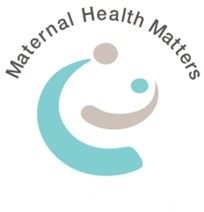When a mother dies during childbirth, the future dies with her.

What follows is an excerpt from the 2023 Goalkeepers Report. You can read the full report here.
When a mother dies during childbirth, the future dies with her.
The world doesn’t just lose everything she is and will be. We also—all too often—lose her child. The chance of a baby reaching their first birthday drops to less than 37 percent when their mother dies during childbirth.
This happens 800 times a day. Once every two minutes, a mother dies from complications due to childbirth. By the time you finish reading this introduction, it will happen again.
Two decades ago, that wasn’t the way progress was heading.
The early 2000s were a boom moment for virtually every measure of human well-being. Poverty rates. Educational achievement. Longevity. Things were improving. But nowhere was progress faster or more thrilling than with the health of mothers and their children.
This didn’t happen by accident. In 2000, world leaders drafted the Millennium Development Goals (MDGs), which included ambitious targets for the health of mothers and newborns. In response, big new organizations helped accelerate progress, like Gavi, the Vaccine Alliance and the Global Fund to Fight AIDS, Tuberculosis, and Malaria. For the first time in human history, basic lifesaving health care was made available to hundreds of millions of people: AIDS medications, contraceptives, childhood vaccines, bed nets to prevent malaria.
It was a thrilling moment—until it ended. And when COVID-19 hit, the virus overwhelmed the clinics and health workers that had helped women deliver their babies safely. Since then, progress has continued to stall.
Every year, approximately 5 million children die before they reach their fifth birthday. Nearly another 2 million babies never take their first breath—they’re stillborn. Although these deaths have continued to decline since the mid-2010s, they’re not declining fast enough, especially for infants. Most child deaths—74 percent—happen during a baby’s first year.
Meanwhile, for new mothers, progress has hit a brick wall. Globally, maternal mortality rates have remained stubbornly static over the past eight years, and in some countries, from the United States to Venezuela, they have risen.
Two SDG targets that are off track

Despite significant progress from 2000 to 2015, slowing improvement since then means the world is not on track to reach the Sustainable Development Goals for the survival of mothers or babies—not unless progress is accelerated.
As we began developing this report, we knew we had to focus on these alarming statistics. It’s true, there are so many new and complex issues confronting the world, from climate change-induced heat waves to recent breakthroughs in artificial intelligence (AI). Still, we believe our most ancient public health problem—the survival of mothers and babies— remains the most urgent.
2023 marks the halfway point for the successors to the Millennium Development Goals—the Sustainable Development Goals. The ambition was to end all preventable child deaths by 2030, and to cut the maternal mortality rate to less than 70 out of every 100,000 births. We are far off track on both goals—but that doesn’t have to be the case.
In fact, there’s a new and remarkable irony about the problem of maternal and neonatal mortality: In the 2010s, just as the problem was about to get worse, it also became more solvable. Doctors uncovered revolutionary information about maternal and child health—everything from the exact diseases that are killing children, to the role anemia can play in increasing blood loss during childbirth, to previously unknown ways in which a baby’s health is linked to their mother’s.
It’s not an exaggeration to say that researchers have learned more about the health of mothers and babies over the past 10 years than they did in the century before that. Tragically, those solutions aren’t reaching families in the communities where mothers and kids need them most. That needs to change.
In the following essays, we’ll describe how these insights are being turned into innovations and practices to accelerate progress and boost survival rates for mothers and babies. Typically, we focus only on low- and middle-income countries (LMICs), but researchers believe many of these breakthroughs could also be used to fight the epidemic of maternal mortality globally, including in the United Kingdom and the United States, where death rates for Black mothers have doubled since 1999.
What will these new innovations mean for the survival of mothers and babies? For this report, global health experts estimated how many additional lives might be saved if these new innovations were used widely in LMICs. The result? Nearly 1,000 mothers and babies each day through the end of the decade. Or 2 million lives.
 By making new innovations accessible to those who need them most, 2 million additional lives could be saved by 2030—and 6.4 million lives by 2040.
By making new innovations accessible to those who need them most, 2 million additional lives could be saved by 2030—and 6.4 million lives by 2040.
That’s 2 million families spared an unimaginable heartbreak—and 2 million more people who can shape and enrich our world.
You don’t need us to tell you what a remarkable achievement that would be. Just look.
Click here to read the entire 2023 Goalkeepers Report.
We at MHM welcome and applaud the work that the Gates Foundation is doing to improve maternal health across the globe.
#mattersmaternal
